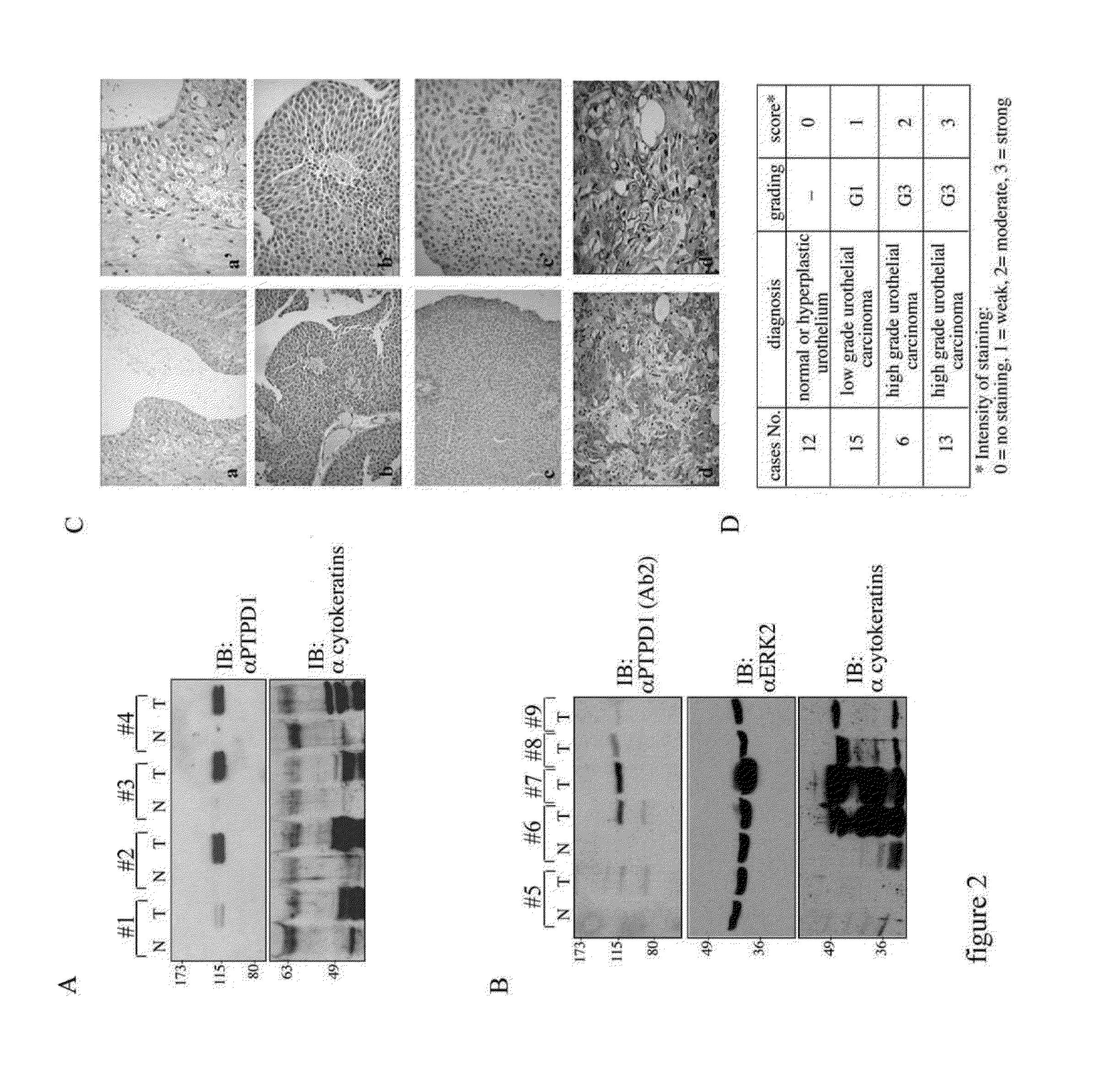Method for Diagnosis of Bladder Cancer and Related Kits
a bladder cancer and kit technology, applied in the field of new molecular biomarkers, can solve the problems of unreliable cytology using bladder wash or voided urine samples, ineffective treatment of invasive urothelial carcinoma, and problems in diagnosis and staging of urothelial carcinoma
- Summary
- Abstract
- Description
- Claims
- Application Information
AI Technical Summary
Benefits of technology
Problems solved by technology
Method used
Image
Examples
examples
Figure Legends
[0019]FIG. 1. A. Schematic representation of the human PTPD1 protein. PTP, catalytic domain; AcR, acidic region; FERM, Four point one-Ezrin-Radixin-Moesin domain Binding domains for src, actin and FAK are indicated.
[0020]FIG. 2. PTPD1 is highly expressed in bladder carcinomas. A-B. Tumor samples (T) were isolated from patients affected by high grade (lanes #2, #3, #4, #6, #7, #8) or low grade (lanes #1, #5, #9) urothelial carcinoma. Normal tissue (N) surrounding each neoplastic lesion was also isolated. Tissue samples were lysed, resolved on 8% SDS-PAGE gels and immunoblotted with the following antibody: anti-peptide PTPD1 (ab1) (A) or anti-polypeptide PTPD1 (ab2) (B), anti-ERK2 and anti-cytokeratins. C. Tissue sections from normal bladder (a), hyperplastic bladder (b and c) and high grade (d) of urothelial carcinoma were immunostained with anti-PTPD1 antibody and analyzed by light microscopy. Higher resolution panels (a′, b′, c′, d′) of each set of images are shown on...
PUM
| Property | Measurement | Unit |
|---|---|---|
| Fraction | aaaaa | aaaaa |
| Fluorescence | aaaaa | aaaaa |
Abstract
Description
Claims
Application Information
 Login to View More
Login to View More - R&D
- Intellectual Property
- Life Sciences
- Materials
- Tech Scout
- Unparalleled Data Quality
- Higher Quality Content
- 60% Fewer Hallucinations
Browse by: Latest US Patents, China's latest patents, Technical Efficacy Thesaurus, Application Domain, Technology Topic, Popular Technical Reports.
© 2025 PatSnap. All rights reserved.Legal|Privacy policy|Modern Slavery Act Transparency Statement|Sitemap|About US| Contact US: help@patsnap.com



